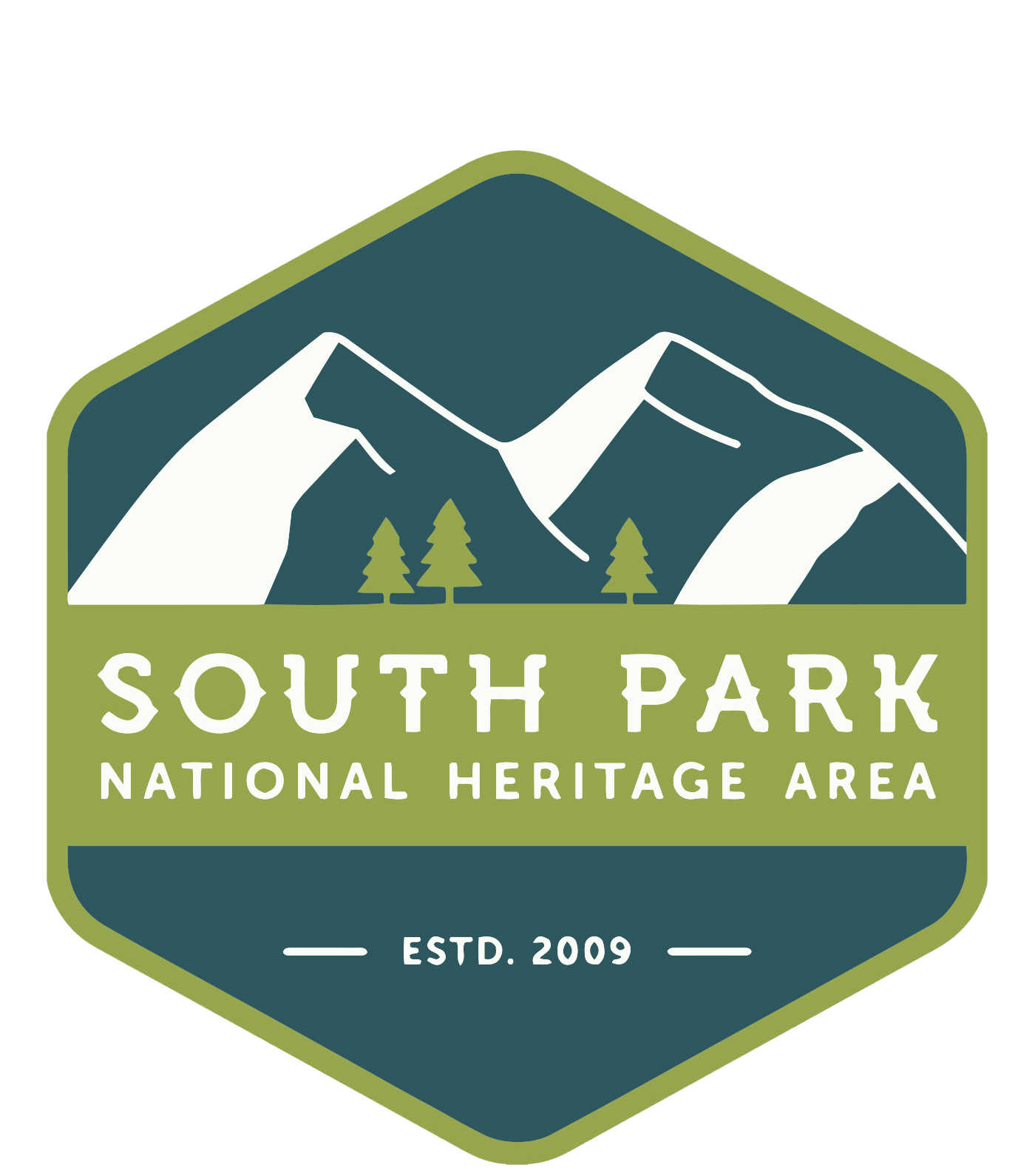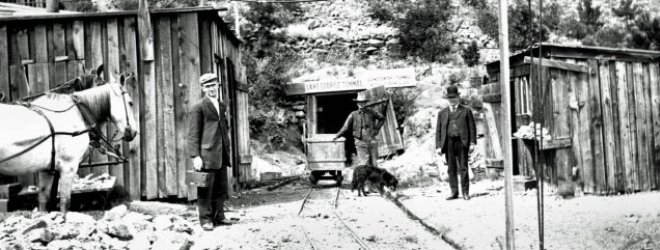As early as the spring of 1839 an overland party bound for Oregon crossed South Park as the American nation began to expand westward. It was the 1859 Pikes Peak Gold Rush, however, that led to an explosion of population. In 1860, Park County’s approximately 10,000 residents made up a third of the population of Colorado Territory. The rush of prospectors and mining activity during what became known as the Pikes Peak Gold Rush (later called the Colorado Gold Rush) changed the social fabric of South Park. Gold was reportedly discovered in South Park as early as 1803 by a Kentuckian named James Pursley, who had gone west to trap and explore. He apparently had little interest in mining, however, and more than half a century passed before the discovery of gold along Tarryall Creek brought a flood of prospectors to South Park. Merchants and others followed, quickly turning mining camps into communities including Fairplay and Alma.
 Initially, gold was found in stream beds or on the ground, along the banks, where it had settled after being carried downhill from the erosion of uphill parent deposits. “Placer” mining, the word derived from Spanish terms for sand deposits, was the earliest form of mining in South Park. It involved basic methods such as panning and sluicing and evolved into more complex methods, such as hydraulic mining and dredging, to reach mineral deposits. Around 1865, the concentration of gold in placer deposits dwindled, and miners either left South Park or turned to the more expensive method of hard rock mining. By early 1860, the rich Phillips Lode vein, ranging from 25 to 60 feet wide, was being worked almost like a placer, but other mines required hand excavation to wrest the ores from their underground veins. Silver mining got underway in earnest in 1871 when a Captain Plummer discovered an outcropping especially high in silver on Mount Bross. Hard rock mining required tunneling into the mountain and consisted of adits (horizontal excavations), stopes (vertical shafts), and drifts (horizontal shafts that follow the vein).
Initially, gold was found in stream beds or on the ground, along the banks, where it had settled after being carried downhill from the erosion of uphill parent deposits. “Placer” mining, the word derived from Spanish terms for sand deposits, was the earliest form of mining in South Park. It involved basic methods such as panning and sluicing and evolved into more complex methods, such as hydraulic mining and dredging, to reach mineral deposits. Around 1865, the concentration of gold in placer deposits dwindled, and miners either left South Park or turned to the more expensive method of hard rock mining. By early 1860, the rich Phillips Lode vein, ranging from 25 to 60 feet wide, was being worked almost like a placer, but other mines required hand excavation to wrest the ores from their underground veins. Silver mining got underway in earnest in 1871 when a Captain Plummer discovered an outcropping especially high in silver on Mount Bross. Hard rock mining required tunneling into the mountain and consisted of adits (horizontal excavations), stopes (vertical shafts), and drifts (horizontal shafts that follow the vein).
To claim a mine, one physically staked the area to be mined, then filed paperwork with the county clerk and received an unpatented claim. To receive a full patent or deed to a mine, the miner had to meet specific requirements, including proof of the existence of “locatable minerals” such as gold, silver, lead, zinc, or tungsten. If the mineral value exceeded the public value of the land, a patent could be issued. Once a patent was received, the property could be used for any legal purpose. Several legal precedents, including Western water rights, are derived from the bylaws of mining districts such as the Independent Mining District around Alma. The Independent Mining District Bylaws, adopted on July 4, 1861, included 14 articles adopted by the miners “for the purposes of securing peace, harmony, justice and security to our property.” These laws and bylaws remained in place until state laws were enacted in 1879 and are considered influential in early state legislation. In 1866, Congress passed legislation formalizing the system of lode or hard rock mining claims and did the same for placer mining claims in 1870. In 1872, the General Mining Act combined these laws and today, with some amendments, this law continues to govern mining claims in the United States. Silver mining claims blanketed the mountains of the Mosquito Range and, over time, the range would also yield rich deposits of zinc, lead, molybdenum, uranium, rhodochrosite, and semi-precious stones, as well as oil and gas, rare earths, gravel, and boulders. Although short-lived, coal mining also played an important role in South Park during the 1880s. Just a few miles east of Como, the King Coal Mine and community of King were established. At the height of production, about 350 miners representing as many as 13 nationalities, including Italian, Austrian, Swedish, English, and Chinese, worked the coal deposits. However, by the mid-1890s the coal mining industry had collapsed in South Park.
 Initially, extracted ore was carried out of the mountains by burros. More than a means of transportation, these hardy animals often became companions to the miners, who valued them for their toughness and ability to navigate rough terrain. Burros are still highly valued by the communities of South Park and are celebrated each year during Burro Days and the World Championship Pack Burro Race. Over time, tramways were built to mechanically move ore from mountain to valley where it could be processed. Initially, burro trains and then freight haulers carried the raw ore to a distant processor who bought it in bulk. Many miners developed ways to reduce costs by milling the ore on-site or nearby at places like the Paris and Magnolia Mills, prior to shipping the ore to market. Eventually, a number of smelters developed near Alma, which became the refining center for South Park ore. The mining industry fell into decline in the 20th Century but remains a part of South Park’s modern landscape.
Initially, extracted ore was carried out of the mountains by burros. More than a means of transportation, these hardy animals often became companions to the miners, who valued them for their toughness and ability to navigate rough terrain. Burros are still highly valued by the communities of South Park and are celebrated each year during Burro Days and the World Championship Pack Burro Race. Over time, tramways were built to mechanically move ore from mountain to valley where it could be processed. Initially, burro trains and then freight haulers carried the raw ore to a distant processor who bought it in bulk. Many miners developed ways to reduce costs by milling the ore on-site or nearby at places like the Paris and Magnolia Mills, prior to shipping the ore to market. Eventually, a number of smelters developed near Alma, which became the refining center for South Park ore. The mining industry fell into decline in the 20th Century but remains a part of South Park’s modern landscape.

